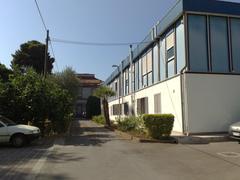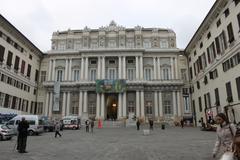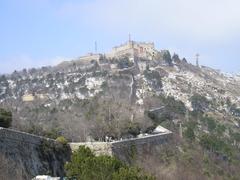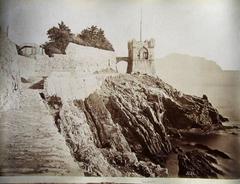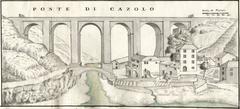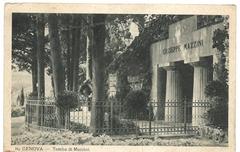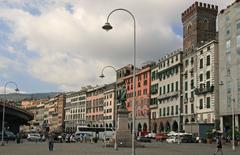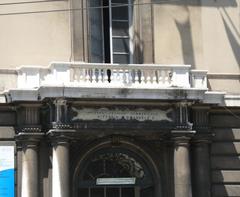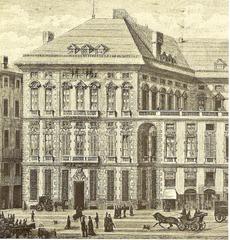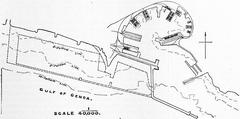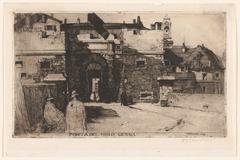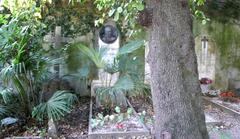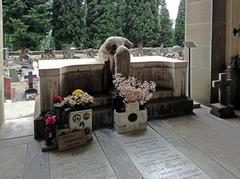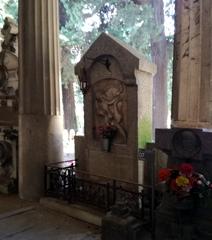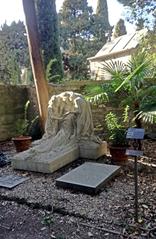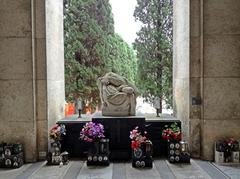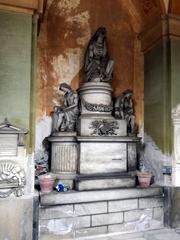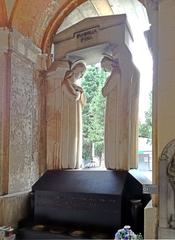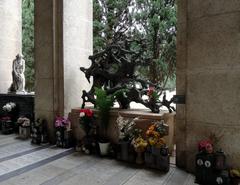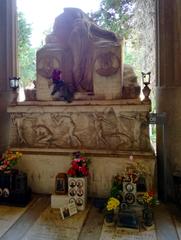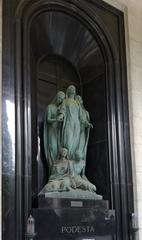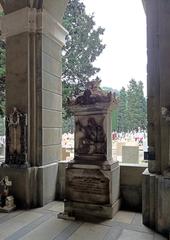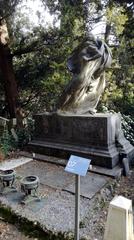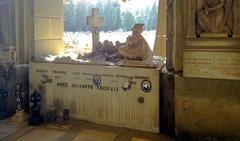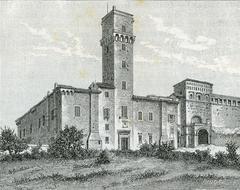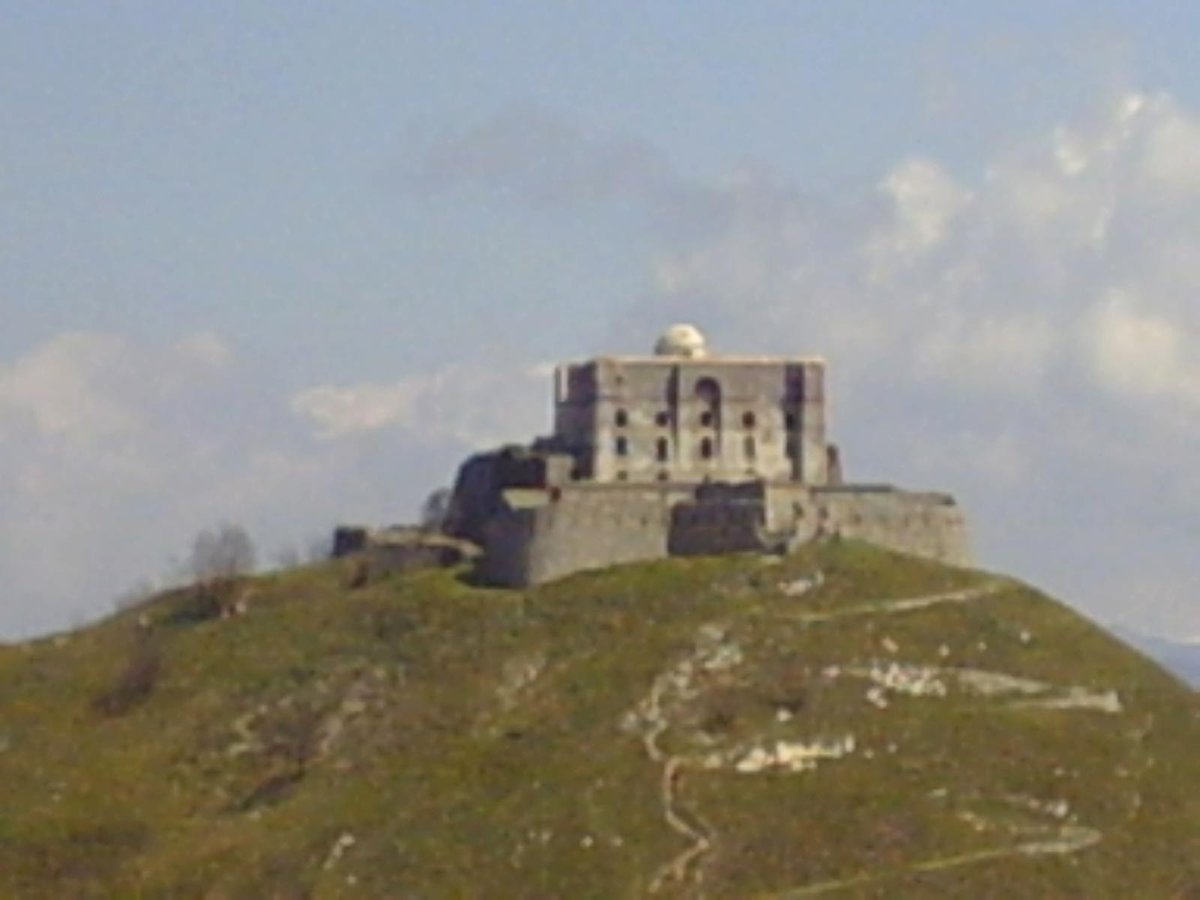
Visiting Hours and Tickets for Forte Diamante in Genoa
Date: 23/07/2024
Introduction to Forte Diamante
Nestled in the hills above Genoa, Italy, Forte Diamante is a historical gem that offers visitors a glimpse into the city’s rich military past. Constructed between 1756 and 1758, this formidable fort was designed by the military engineer Jacques De Sicre under the direction of the Republic of Genoa. Its strategic location at an altitude of 667 meters above sea level provided a critical vantage point for monitoring and defending against enemy movements (Forte Diamante History). Over the years, Forte Diamante has played a pivotal role in various military conflicts, including the War of Austrian Succession and the Napoleonic Wars, showcasing its resilience and strategic importance (Napoleonic Wars). Today, it stands as a well-preserved example of 18th-century military architecture and a popular destination for history enthusiasts and hikers alike. This guide provides all the information you need for an unforgettable visit to Forte Diamante, including its history, architectural features, visiting hours, ticket prices, and essential travel tips.
Table of Contents
- Origins and Construction
- Military Significance
- Architectural Features
- Decline and Restoration
- Cultural and Historical Impact
- Visitor Experience
Exploring Forte Diamante - History, Visiting Hours, Tickets, and Tips for Genoa’s Historical Gem
Origins and Construction
Forte Diamante, located in the hills surrounding Genoa, Italy, is a significant historical military structure. Its construction began in 1756 and was completed in 1758 under the direction of the Republic of Genoa. The fort was designed by the military engineer Jacques De Sicre, who was tasked with creating a defensive structure to protect the city from potential invasions (Forte Diamante History).
The strategic location of Forte Diamante, perched at an altitude of 667 meters above sea level, provided a commanding view of the surrounding valleys and the city of Genoa. This vantage point was crucial for monitoring and defending against enemy movements. The fort’s name, “Diamante,” which means “diamond” in Italian, reflects its perceived value and strength as a defensive asset.
Military Significance
Throughout its history, Forte Diamante played a pivotal role in various military conflicts. During the War of Austrian Succession (1740-1748), the fort’s construction was part of a broader effort to strengthen Genoa’s defenses against Austrian forces. The fort’s robust design, featuring thick walls and strategically placed cannons, made it a formidable barrier against invaders.
In the late 18th century, Forte Diamante was involved in the Napoleonic Wars. In 1800, during the Siege of Genoa, the fort was occupied by French troops under the command of General André Masséna. The French forces used the fort as a defensive stronghold against the Austrian and British armies. Despite being heavily bombarded, Forte Diamante withstood the attacks, demonstrating its resilience and strategic importance (Napoleonic Wars).
Architectural Features
Forte Diamante’s architecture is a testament to the military engineering prowess of the 18th century. The fort’s design includes a central bastion, surrounded by a series of defensive walls and ramparts. The central bastion, known as the “Torre di Diamante,” served as the main defensive structure and housed the fort’s garrison.
The fort’s walls were constructed using local stone and were designed to withstand artillery fire. The walls are punctuated by gun ports and embrasures, allowing defenders to fire upon approaching enemies while remaining protected. The fort also features a series of underground tunnels and storage rooms, which were used to store ammunition and supplies (Architectural Features).
Decline and Restoration
Following the Napoleonic Wars, Forte Diamante’s military significance began to wane. By the mid-19th century, advances in military technology rendered the fort obsolete. The fort was gradually abandoned and fell into disrepair. However, its historical and architectural value was recognized, and efforts to preserve and restore the fort began in the 20th century.
In the 1970s, the Italian government initiated a restoration project to stabilize the fort’s structure and prevent further deterioration. The restoration work included reinforcing the walls, repairing the roof, and clearing the surrounding vegetation. Today, Forte Diamante stands as a well-preserved example of 18th-century military architecture and is a popular destination for history enthusiasts and hikers alike (Restoration Efforts).
Cultural and Historical Impact
Forte Diamante is not only a symbol of Genoa’s military history but also a cultural landmark. The fort has been featured in various literary works, paintings, and films, highlighting its significance in Italian culture. Its imposing presence and historical legacy continue to inspire artists and writers.
The fort is also a site of historical reenactments and educational programs. Each year, events are held at Forte Diamante to commemorate its role in historical conflicts and to educate the public about its architectural and military significance. These events attract visitors from around the world and contribute to the preservation of the fort’s legacy (Cultural Impact).
Visitor Experience
Today, Forte Diamante is accessible to visitors who wish to explore its historical and architectural features. The fort is located within the Parco delle Mura, a protected natural area that offers scenic hiking trails and panoramic views of Genoa and the Ligurian coastline. Visitors can reach the fort by following well-marked trails that wind through the park’s lush landscape.
Guided tours of Forte Diamante are available, providing visitors with in-depth information about the fort’s history, architecture, and military significance. The tours often include access to the fort’s interior, where visitors can explore the central bastion, underground tunnels, and defensive walls. Informational plaques and exhibits are also placed throughout the fort, offering insights into its construction and historical context (Visitor Information).
In addition to its historical attractions, Forte Diamante offers a unique opportunity to experience the natural beauty of the Ligurian region. The fort’s elevated position provides stunning views of the surrounding valleys, mountains, and coastline, making it a popular destination for photographers and nature enthusiasts.
Practical Information for Visitors
Visiting Hours
Forte Diamante is open to visitors year-round, with varying visiting hours depending on the season. It is recommended to check the official website or contact the local tourism office for the most up-to-date information on opening hours.
Tickets and Pricing
Entry to Forte Diamante may require a ticket, especially during special events or guided tours. Ticket prices vary, with discounts available for children, students, and seniors. For the latest pricing information, visitors should refer to the fort’s official website.
Accessibility and Travel Tips
The fort’s location within a natural park means that access may involve hiking on uneven terrain. Visitors are advised to wear appropriate footwear and bring water. While the fort itself has some accessibility features, certain areas may be challenging for those with mobility issues. It is recommended to check accessibility details in advance.
Conclusion
Forte Diamante stands as a testament to Genoa’s rich military history and architectural heritage. Its strategic location, robust design, and historical significance make it a must-visit destination for anyone interested in exploring the region’s past. Through ongoing preservation efforts and educational programs, Forte Diamante continues to be a valuable cultural and historical landmark, offering visitors a glimpse into the military history of Genoa and the broader Ligurian region.
FAQ
What are the visiting hours for Forte Diamante?
Visiting hours vary by season. Please check the official website or contact the local tourism office for the latest information.
How much do tickets cost?
Ticket prices vary depending on the type of visit (self-guided, guided tours, special events). Discounts are available for children, students, and seniors. Refer to the official website for current pricing.
Is Forte Diamante accessible for people with disabilities?
While the fort has some accessibility features, certain areas may be challenging for visitors with mobility issues. It is advisable to check specific accessibility details in advance.
Are there guided tours available?
Yes, guided tours are available and provide in-depth information about the fort’s history and architecture. Check the official website for tour schedules and booking information.
What other attractions are nearby?
Forte Diamante is located within the Parco delle Mura, which offers numerous hiking trails and scenic views. Additionally, the city of Genoa offers a wealth of historical sites, museums, and cultural attractions to explore.
Summary and Key Points
Forte Diamante is more than just a historical military fort; it is a testament to Genoa’s rich heritage and enduring spirit. Its robust design and strategic location have made it a significant player in various historical conflicts, and its preserved state today allows visitors to step back in time and appreciate its architectural and military significance. The fort’s panoramic views of the Ligurian region and its location within the scenic Parco delle Mura make it a must-visit destination for both history buffs and nature enthusiasts. Ongoing preservation efforts and educational programs ensure that Forte Diamante continues to inspire and educate future generations. Whether you’re exploring its underground tunnels, enjoying a guided tour, or simply taking in the breathtaking views, a visit to Forte Diamante promises to be a memorable experience that highlights the rich cultural and historical tapestry of Genoa (Restoration Efforts, Visitor Information).
Sources and Further Reading
- Exploring Forte Diamante - History, Visiting Hours, Tickets, and Tips for Genoa’s Historical Gem, 2023, VisitGenoa https://www.visitgenoa.it/en/forte-diamante
- The Siege of Genoa (1800), 2023, Napoleon.org https://www.napoleon.org/en/history-of-the-two-empires/articles/the-siege-of-genoa-1800/
- Forte Diamante Architectural Features, 2023, ForteDiamante.it https://www.fortediamante.it/architecture
- Forte Diamante Restoration Efforts, 2023, ItalianHeritage.gov https://www.italianheritage.gov/forte-diamante-restoration
- Forte Diamante Events, 2023, GenoaCultura.it https://www.genovacultura.it/forte-diamante-events
- Forte Diamante Visitor Information, 2023, VisitGenoa https://www.visitgenoa.it/en/forte-diamante-visitor-info








